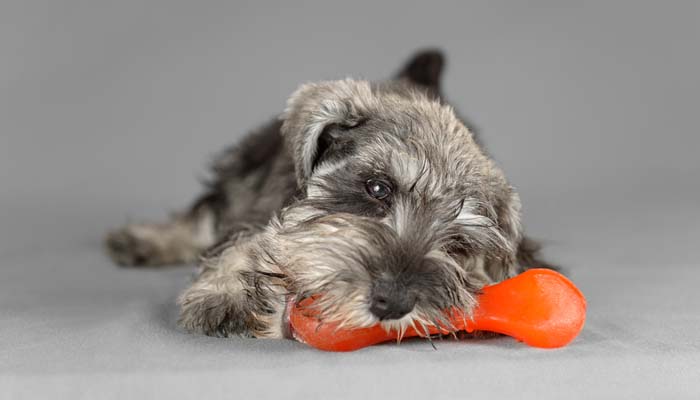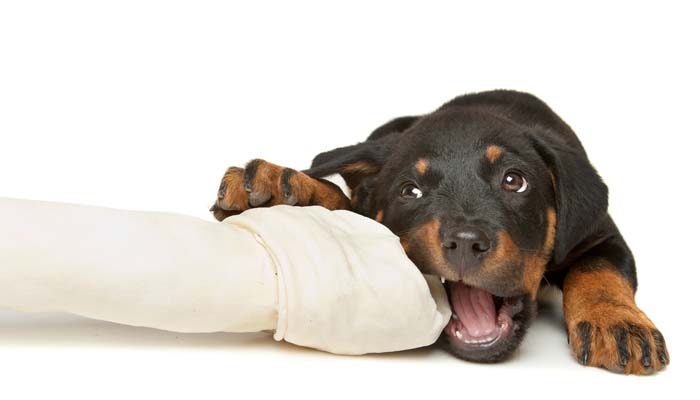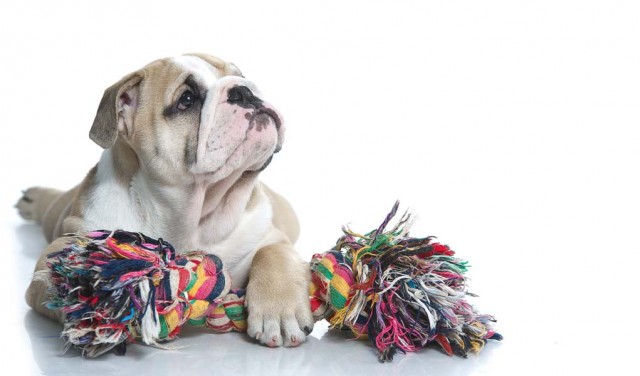
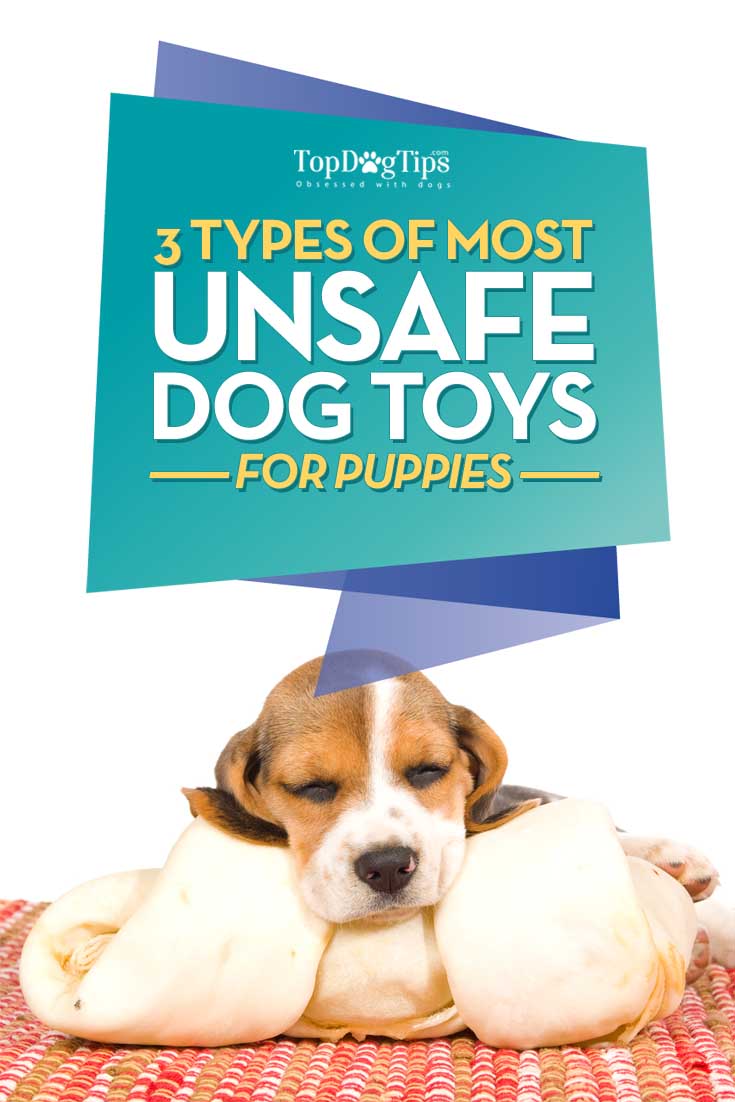
Table of Contents
We all want the absolute best for our puppies and love to pamper them with good food, exercise and their favorite toys. Most of the toys we buy are perfectly safe for our little furry friends, but there are some toys that are popular for dogs and seem safe, but this is not always the case. You may be surprised to find out which are the most unsafe dog toys for puppies.
Selecting a toy for your dog is not something to take lightly. It may seem like a simple task, but you need to think about your dog's needs, wants and safety. If your pet likes to chew, buy him chew toys. If he likes to fetch, buy him a toy that you can throw. That's the simple part.
The hard part is deciding which toys are safe your puppy and which are not. This will depend on his age, size, his chewing habits and the quality of the toy. The toys listed below are the most unsafe dog toys for puppies, but remember that ideally dogs should always be supervised when playing with any toy.
RECOMMENDED: The Best Dog Toy Review
3 Most Unsafe Dog Toys for Puppies
1. Rawhide chews
One of the most potentially dangerous pet chew toys is rawhide, the leathery strips that are rolled up into bone shapes and other forms which appeal to pet owners for their pooches.
Dogs love to chew at rawhides, and they can satisfy your pooch’s need to chew in a positive way. The sticks keep puppies busy for hours and owners are happy as rawhide is a good value and lasts a long time.
Rawhide dog toys can pose a choking risk, as pieces of the sharp material can splinter off and get caught in your dog’s esophagus. Because the rawhide is manufactured to be so resilient and long-lasting, it doesn’t break down. Surgery for removal is usually needed.
Doctor Karen Becker, a world-renowned veterinarian, writes in an article for Mercola:
“Rawhide chews start out hard, but as your dog works the chew it becomes softer, and eventually he can unknot the knots on each end and the chew takes on the consistency of a slimy piece of taffy or bubble gum. And by that time your dog cannot stop working it — it becomes almost addictive.”
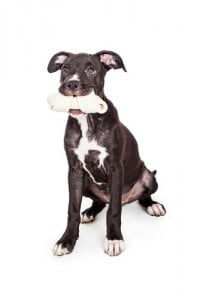 She recommends that if you do give rawhide chews, to take them away once they have become soft and allow them to re-harden.
She recommends that if you do give rawhide chews, to take them away once they have become soft and allow them to re-harden.
Rawhide also carries a contamination risk and may carry traces of bacteria like Salmonella or E. coli on them. Additionally, some dogs also seem to have a sensitivity to the ingredients of rawhide and may get digestive irritation leading to malaise, vomiting and diarrhea.
Rawhide chew sticks begin with the splitting of cattle hide. The top grain is usually tanned and made into leather products. The inner portion, in its ‘raw’ state, goes into the chew sticks. The cattle hides are treated with chemicals to help preserve the product before being soaked and treated with either ash-lye solution or a highly toxic soaking in sodium sulphide liming.
This process strips the hair and fat that may be attached to the hides. The inner layer of the hide is then washed and whitened using hydrogen peroxide and/or bleach. This helps to remove the smell of the leather and to give the hides a look resembling leathery whitened sheets.
The concerns are that while these trace chemicals appear safe, there is little evidence that they are non-toxic when consumed in small doses over a long period of time as they would when your dog is chewing on them every day
Color is then added, and the chews are basted, smoked and tinted. Next, an appealing scent is added to encourage your dog to keep chewing. The hides can also be covered with a coating of titanium oxide to make them appear white and attractive looking on pet store shelves and in the eye of the buyers.
RELATED: Most Durable Dog Toys That Will Outlast Your Puppy's Jaws
2. Soft plastic and rubber dog toys
One of the most unsafe dog toys for puppies is also one of the most common. Soft pliable rubbery toys are very commonly found in pet stores, and most dogs love them. However, some evidence suggests that there may be some risks involved because of the way the plastics are manufactured. This is a clearly a major concern as these toys spend a lot of time in your doggy’s mouth.
The Society of Environmental Toxicology and Chemistry have reported that many of the plastic and rubbery toys and fetching batons that dogs and puppies chew on and play with contain dangerous chemicals that may be harmful to their health.
Plastic and rubbery dog toys like this may contain dangerous levels of poisonous chemicals like BPA – Bisphenol A, is a chemical which had been used widely in plastic and vinyl.
According to Discovery News, Phil Smith and Kimberly Wooten of Texas Tech University co-authored a study on BPA and dangerous chemicals in puppy and dog toys. Phil Smith was especially concerned with the fetching batons, or ‘bumpers’ that are commonly used during training, and with plastic and rubber toys and chew bones.
They found that the aging or weathered toys had increased concentrations of BPA and phthalates. The study claimed that BPAs and phthalates can have effects on developing fetuses and may have lifelong effects on offspring of lab animals. It would be advisable to keep these sorts of toys or chews away all dogs especially puppies and pregnant dogs.
Indeed, the U.S government has banned the use of BPA in baby bottles in 2014.
Since the discovery of the potentially dangerous effects of BPA on children, some dog toy manufacturers have already started the manufacture BPA Free dog toys. Also look for U.S. 100% natural rubber toys for your puppy’s safety.
RECOMMENDED: 5 Best KONG Dog Toys for Puppies & Adult Dogs
3. Other hazardous puppy toys
Cooked bones are another one of the most unsafe dog toys for puppies. They can splinter easily and get lodged in the throat or shredded sharp pieces can tear the digestive tract and cause internal injuries.
RELATED: Cooked Bones for Dogs: Safe or Not?
Caution is also needed with hard plastic Frisbees. Traditional ‘human’ Frisbees can hurt your puppy’s teeth. They can also break apart easily after a few throws and chews. And of course, an overenthusiastic throw can hurt your pooch.
Frisbee games are a lot of fun though, and great exercise, so instead go for one of the specially designed dog-friendly Frisbees available which are much safer. They can be found in most pet stores and are inexpensive.
Tennis balls are not always suitable for puppies as they can chew off the covering and swallow it whole. It’s also very important to be aware of the sizes of any ball toys, and make sure they are not small enough to be swallowed. Dogs of different sizes need different sized toys too!
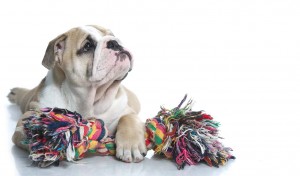 Dogs love soft toys, but if giving your pooch a soft toy to play with make sure you are always in the room to monitor him. The stuffing can easily come out and become a choking hazard or cause stomach blockages. Make sure any soft toys are strong and sturdy and be sure your dog can’t rip them open.
Dogs love soft toys, but if giving your pooch a soft toy to play with make sure you are always in the room to monitor him. The stuffing can easily come out and become a choking hazard or cause stomach blockages. Make sure any soft toys are strong and sturdy and be sure your dog can’t rip them open.
Check for any parts that could be swallowed like beads, buttons and bows and remove them if need be. When buying toys, always examine them thoroughly for loose parts your pooch could swallow, including any squeakers inside a toy as some dogs are determined to find the source of the squeak and will rip a toy apart to find it.
Rope toys can potentially be dangerous as small threads from the rope can become loose and get swallowed by overzealous chewers. Over time, these threads can build up in your doggy’s digestive system and cause a blockage, requiring surgery to remove. If your pooch loves rope toys, check them periodically for loose threads.
To be on the safe side, think of your pup as a toddler, always into things and putting unsafe items into his mouth. Ensure your dog’s environment is always safe by keeping the most unsafe dog toys for puppies out of your home. Pay special attention to any children's toys or items around your home that your dog may see as a play toy too.
READ NEXT: 10 Ideas for Homemade Dog Toys



